Tire Balance Vs Alignment Differences: When To Do Which One?
![]()
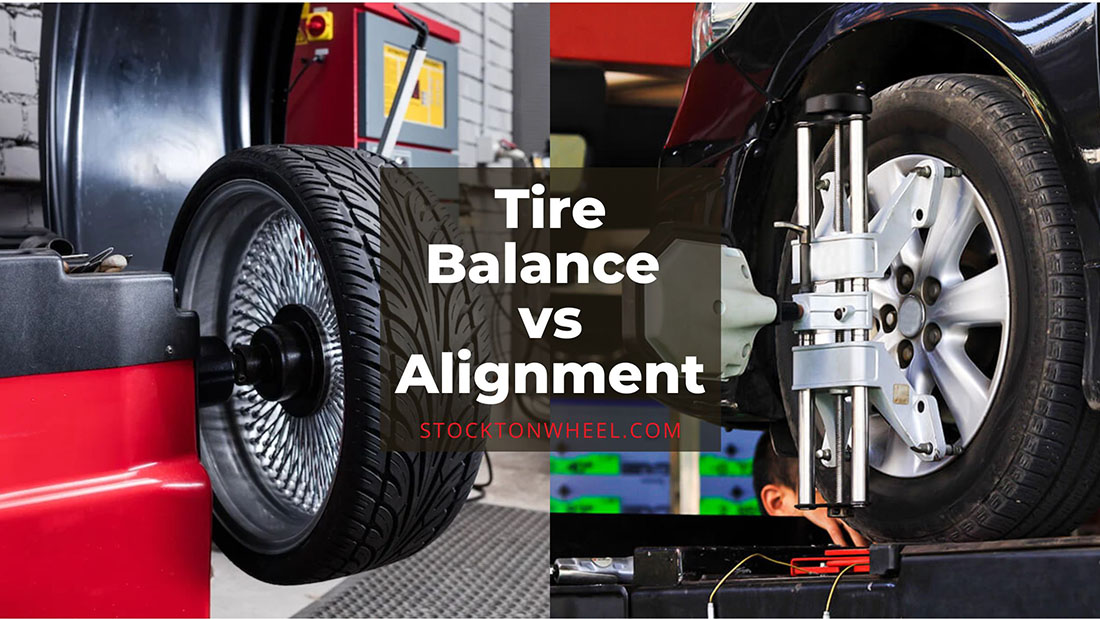
Tire balance and alignment are essential aspects of vehicle maintenance, often confused due to their similar-sounding names. However, they serve distinct purposes in ensuring a smooth and safe ride. Learn more about the differences of tire balance and wheel alignment in this post, clarifying when and why each is necessary.
In this article:
Tire Balance Vs Alignment
While both play essential roles in ensuring your car operates optimally, they serve different purposes and address distinct issues. A tire balance helps even out the distribution of weight throughout your wheel and tire assemblies. Meanwhile, an alignment adjusts the tire angles to create the proper contact between the tire and the road.
What Is Tire Balancing?
Tire balance is a fundamental aspect of vehicle maintenance that focuses on achieving an even weight distribution around each tire and wheel assembly. When your tires are balanced correctly, they spin smoothly without causing vibrations. Here are the two types of balancing.
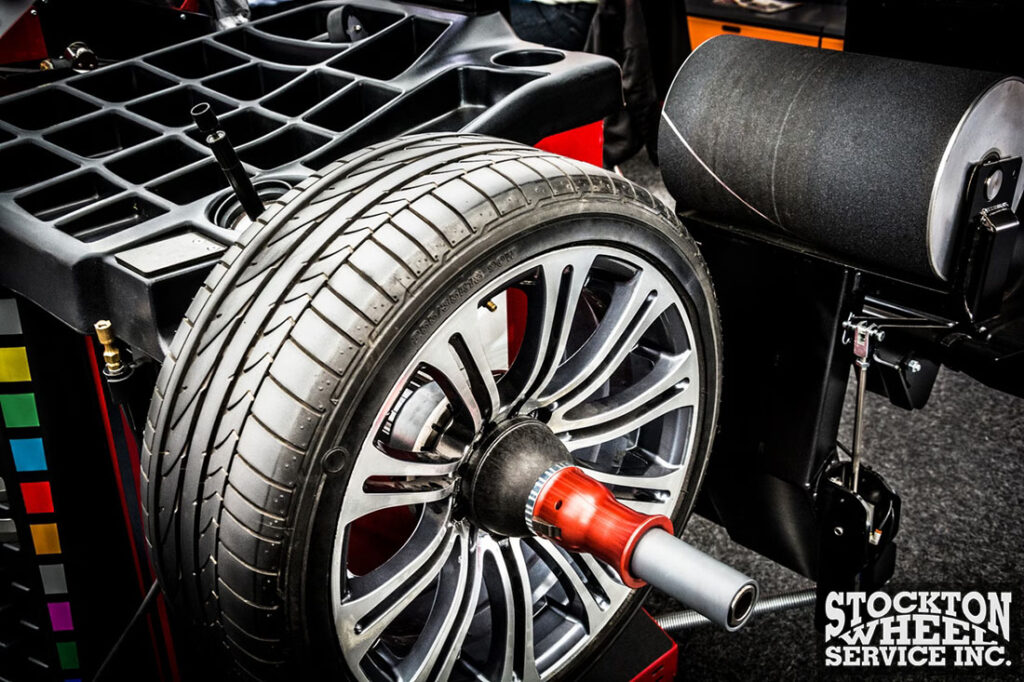
- Dynamic balancing: It is a method used to identify and correct imbalances in a tire and wheel assembly to prevent vibrations and ensure a smooth ride.
- Road force balancing: This, also known as match balancing, is a tire balancing technique that identifies and addresses both the tire’s low and the wheel’s high points to minimize vibrations and provide the smoothest possible ride.
This even weight distribution ensures a comfortable and stable ride for you and your passengers, as vibrations can make driving unpleasant. Also, it contributes to improved safety and performance by reducing the strain on your vehicle’s suspension and steering components.
What Is Wheel Alignment?
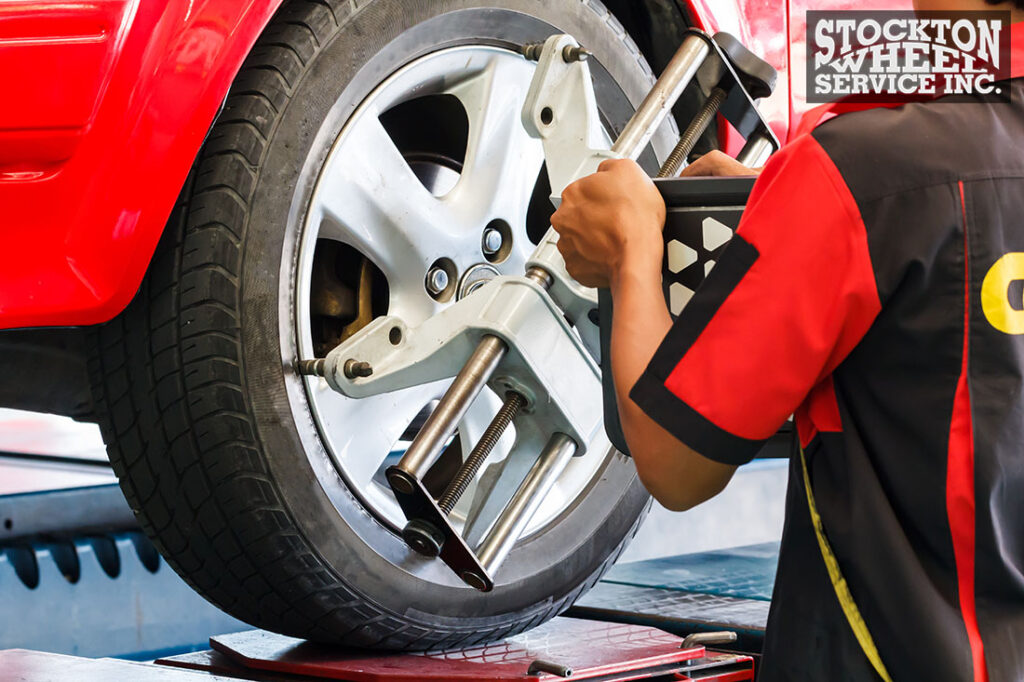
Wheel or tire alignment is a critical aspect of vehicle maintenance. It involves precisely adjusting the angles where the wheels are positioned relative to each other and to the road surface.
Adjusting this angle makes sure that all 4 tires are parallel to one another and square to the road. This creates an ideal configuration for the vehicle’s suspension system.
The three common alignment angles that technicians adjust during a tire alignment are:
- Camber: It refers to the angle of the wheel compared to its vertical axis when viewed from the front or rear of the vehicle. It can be positive (the top half of the tire tilting outward from the car) or negative (the top half of the tire leaning inward toward the vehicle).
- Caster: This is the angle of the steering axis, which is the line between the upper and lower ball joints when viewed from the side of the vehicle. It can be positive (tilting toward the vehicle’s rear) or negative (tilting toward the car’s front). Caster angle affects steering stability and how the vehicle tracks in a straight line.
- Toe: It can be either toe-in (the front tire points slightly inward) or toe-out (the front tire points slightly outward). You should align the axis in a neutral or negative angle for the best handling and on-center feel.
Proper tire alignment helps your tires wear out more evenly, prolonging their longevity and saving some bucks on replacement. Plus, accurate alignment helps improve fuel efficiency since your car encounters less resistance when the wheels are correctly aligned.
How Do You Know If Your Wheels Need Alignment?
Troubles with the steering wheel, unusual tire wear, or vibrating wheels are the common signs showing that you need a wheel alignment. When you notice these signs, you might feel a mix of frustration and concern. The vehicle may not handle as smoothly as it used to, causing discomfort and potentially affecting the overall driving experience.
Steering Wheel Issue

One of the most common signs of misalignment is a noticeable problem with your steering wheel. If you find that your steering wheel isn’t centered when you’re driving straight, it’s a clear indication that something may be amiss. When your wheels are aligned correctly, your steering wheel should be level and centered.
Abnormal Tire Wear
Inspecting your tire wear can reveal a lot about your alignment. Misaligned wheels are the recipe for the uneven tread wear on tires. For example, in case you notice that the edges of your tires are significantly more worn than the center, this means there’s a misalignment. Conversely, if the centers are more worn than the edges, this can also indicate a problem.
Shaking Wheel
A shaking or vibrating steering wheel while driving is another red flag. When misaligned, the wheels can pull in different directions, causing your steering wheel to shake or vibrate. This not only affects your driving comfort but also indicates a potential alignment issue.
How Do You Know When Your Tires Need Balancing?
It’s when you encounter car pulling, abnormal tread wear, and shaking steering wheels. These instabilities experienced while driving can be intolerable, especially if they occur at higher speeds. Plus, the issues may lead to the need for premature tire replacement and increased maintenance costs.
Car Pull To One Side
Suppose your car is inclined to one side while you’re driving on a straight and level road. It’s a strong indication that your tires may be out of balance. This pulling occurs because unbalanced tires can create uneven pressure on your wheels, causing your car to veer in one direction.
Uneven Tread Wear
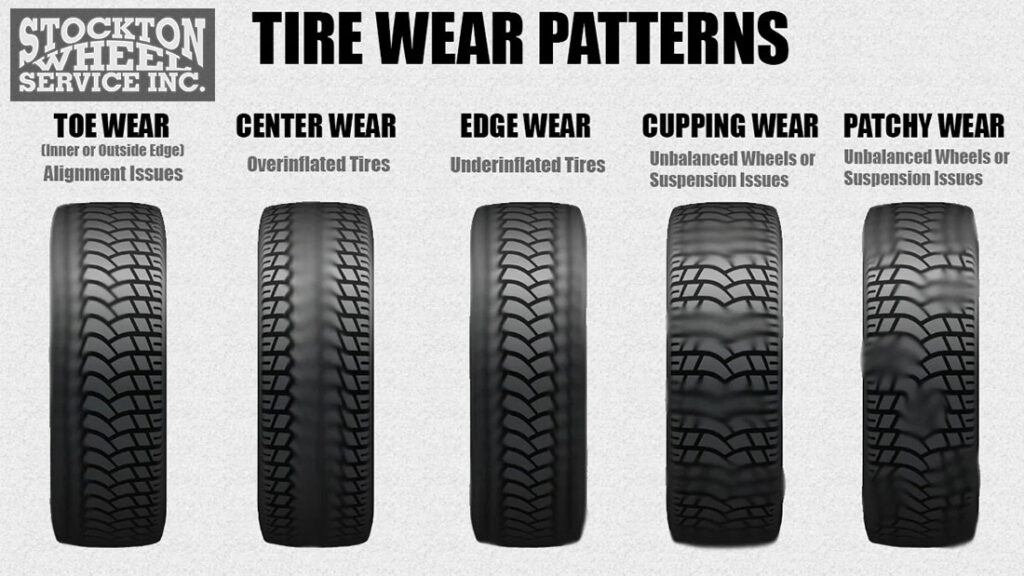
Inspecting the wear patterns on your tire treads can provide valuable insights into whether balancing is needed. Uneven tread wear is a common sign that your tires are not distributing the vehicle’s weight evenly. When tires are unbalanced, certain areas of the tread may wear down faster than others.
Vibrate Steering Wheel
A shaky feel from the steering wheel, notably at specific speeds, is another common symptom of unbalanced tires. These vibrations can range from subtle to pronounced, depending on the severity of the imbalance. Not only do these vibrations compromise your driving comfort, but they can also lead to more significant issues if left unaddressed.
Frequently Asked Questions
Should You Balance Tires Or Align First?
You should balance your tires before getting an alignment. Properly balanced tires will provide more accurate alignment results, so it’s best to start with balancing and then proceed with the alignment if needed.
Do Rear Wheels Need Balancing?
Yes, the rear wheels do need balancing. While the front wheels tend to have a more significant impact on steering and handling, imbalanced rear wheels can still cause vibration and uneven tire wear, affecting overall vehicle stability.
How Long Can You Go Without An Alignment?
You can go without an alignment for a while, but it’s generally recommended not to exceed 10,000 miles without one. However, the ideal interval varies depending on your vehicle, driving habits, and road conditions.
The Bottom Line
Understanding the difference between the two tasks is key to maintaining your vehicle’s performance and safety. Balancing ensures a smooth ride, while alignment keeps your wheels in proper orientation. Both are crucial for tire longevity and overall driving comfort, making them indispensable aspects of responsible car ownership.
Wheel Balance vs. Alignment: What’s the Difference and Why It Matters
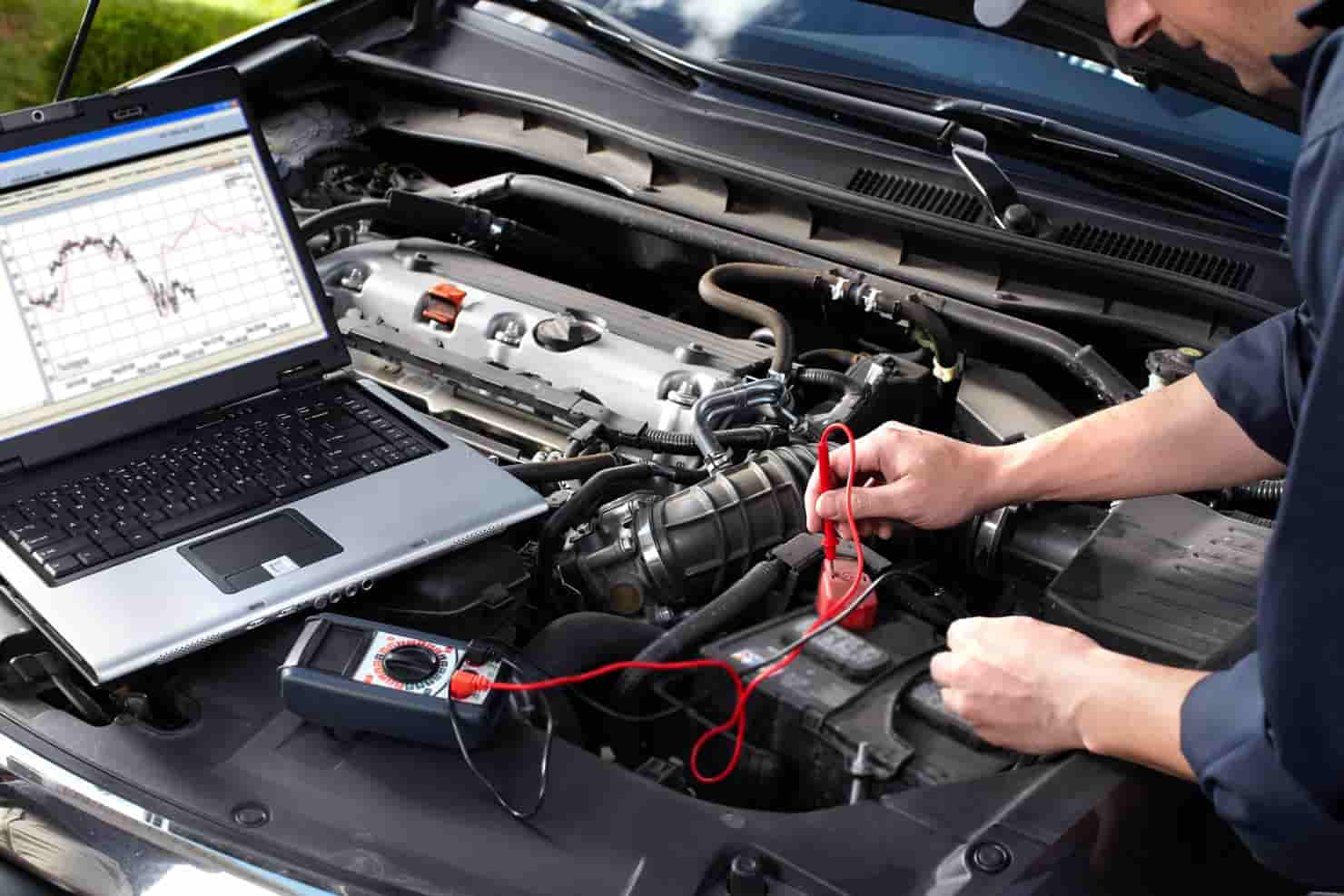
The AAA Approved Auto Repair Facility Locator is a powerful search tool that gives you easy access to information on over 7,000 AAA Approved Auto Repair facilities across North America.
Nearest Approved Auto Repair Facilities
Current Location:
- 1 Santos Tire & Auto Repair, LLC 3939 PIONEER RD BALCH SPRINGS, TX, 75180 106929 4.01 miles
- 2 Norm Reeves Toyota Dallas 9525 E R L Thornton Fwy Dallas, TX, 75228 115463 6.22 miles
- 3 AUTOMOTIVE SOLUTIONS 1021 NEVILLE CT MESQUITE, TX, 75150 77488 6.78 miles
- 4 A TEAM AUTOMOTIVE 250 S COLLINS RD SUNNYVALE, TX, 75182 77515 7.64 miles
Have you ever taken your car into a repair shop or the dealership for some routine or time-stamped maintenance and glossed over the list of services the technicians performed? While many of these services are self-explanatory, trying to figure out the difference between tire balance vs. alignment isn’t easy.
While wheel alignments and balances can help your car handle better, prevent uneven tread wear and make your ride smoother, they are very different services. Let’s look closer at them and why they’re important.
What Is Wheel Balancing?
Wheel balancing is the process of adding weights to a vehicle’s wheels to correct uneven weight distribution. It is designed to ensure that the wheels and tires are properly balanced.
Balancing your wheels ensures that your tire tread wears more evenly and can help prevent shaking and vibrations at higher speeds. If you drive on unbalanced wheels, the vehicle won’t handle as well, you can damage parts of your suspension and your vehicle may have worse fuel efficiency.
Symptoms of Imbalanced Wheels
You can usually tell when it’s time for service. The most common symptoms of imbalanced wheels are:
- Steering wheel, seat or floor vibrations above 45 MPH
- Uneven tire wear
- Reduced fuel efficiency
- Less-responsive handling
- Damage to suspension
Wheels can lose their balance for several reasons, including:
- Hitting curbs or driving on rough roads can cause the weights on your wheels to fall off.
- Aggressive driving can cause uneven wear and flat spots on your tires, which changes the weight distribution on the assembly.
- Improperly installed tires may deflate and throw the balance off.
- Damaged or warped rims can lead to underinflated tires that wear unevenly.
Checking your tires and wheels for damage and making sure that your vehicle’s tires are properly inflated regularly can help you identify a balance problem sooner.
How Balancing Works
A technician will remove wheel assembly from your vehicle and place it onto a wheel balancing machine to perform a wheel balance. They’ll remove any existing weights and then use the machine to spin the assembly. The machine will show the technician where the assembly is unbalanced so they can add new weights to those areas.
Depending on the wheel’s style or finish, the technician may add clip-on weights to the rim or use stick-on weights that attach to the inner part of the wheel.
What Is Wheel Alignment?
Wheel alignment is a service designed to ensure that the wheels on a vehicle are aligned with the components of the suspension and steering systems. Proper alignment keeps the wheel and tire assemblies positioned correctly in relation to the road and each other.
Even though it’s called a wheel alignment, the tire and wheel assembly isn’t changed. Instead, the suspension is adjusted to optimize the tire’s contact with the road, improve steering stability and reduce uneven tire wear.
Symptoms of Misaligned Wheels
Much like imbalanced wheels, you may be able to tell when your wheels are misaligned. An improperly aligned vehicle may have some of the following symptoms:
- The vehicle pulls to the right or left.
- The steering wheel is cocked to one side when driving straight.
- There’s uneven tire wear.
- You notice steering wheel vibration.
Alignment can be thrown off by anything that can affect a vehicle’s suspension, including:
- Driving aggressively
- Running over potholes, rough roads or curbs
- Not maintaining suspension components (springs, shocks, ball joints and other parts)
- Lifting or lowering your vehicle without updating or adjusting suspension parts
- Wear and tear on the suspension
How Alignment Works
An alignment is a series of adjustments to your suspension that will address issues preventing your tires from maintaining proper contact with the road. The three types of alignment a technician will check and adjust are:
- Camber: When looking at the tires from the front of the vehicle, the camber is the inward or outward angle of the tire. If not aligned properly, positive or negative camber can add wear on the tire’s center.
- Toe: The toe alignment is the position of the tires and wheels when the steering wheel is straight. Proper alignment means they are both facing straight forward. If the toe is off, it can lead to extra inner or outer wear on the tire’s edges.
- Caster: This is the angle of the steering components as they meet your wheel. If the angle is out of alignment, it can negatively impact how the vehicle corners and steers, similar to what happens when a shopping cart wheel doesn’t work properly.
During an alignment, the technician will check that these alignments are set to factory recommendations while also noting any problems that may have occurred due to improper alignment.
Because the suspension affects alignment, technicians may need to repair one or more of the components that make up your vehicle’s suspension system. While some elements can be adjusted, like the shock absorbers, you may need to replace others if they are damaged.
Key Differences Between Wheel Balance and Alignment
Alignments and balances help your car ride more smoothly and can help your tires last longer, but there are some critical differences between them:
Related Articles
AAA Advocates Awareness for Slow Down Move Over Law
For more than 15 years AAA, along with other industry and safety stakeholders, has been instrumental in passing Move Over laws in all 50 states..
Time-Stamped Car Maintenance Checklist
Maximize your vehicle’s lifespan with this comprehensive car maintenance checklist, organized by time periods, ensuring no maintenance task is forgotten..
6 Types of Window Tint to Consider for Your Car
Looking to upgrade your car�€�™s style and comfort level? Explore the six different types of window tint to find the perfect fit for your needs..
How Much Does It Cost To Paint a Car?
How much it costs to paint a car depends on several factors, including vehicle size and type of paint, but the average for a mid-range job is $1,000 to $4,500..
https://www.stocktonwheel.com/tire-balance-vs-wheel-alignment/https://www.aaa.com/autorepair/articles/wheel-balance-vs-alignment-whats-the-difference-and-why-it-matters



